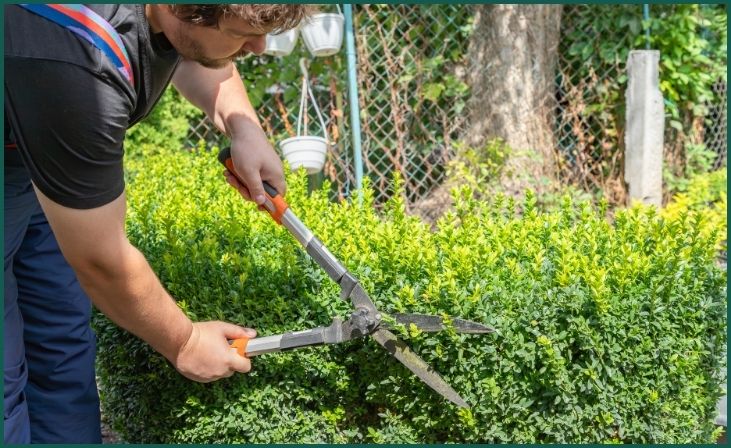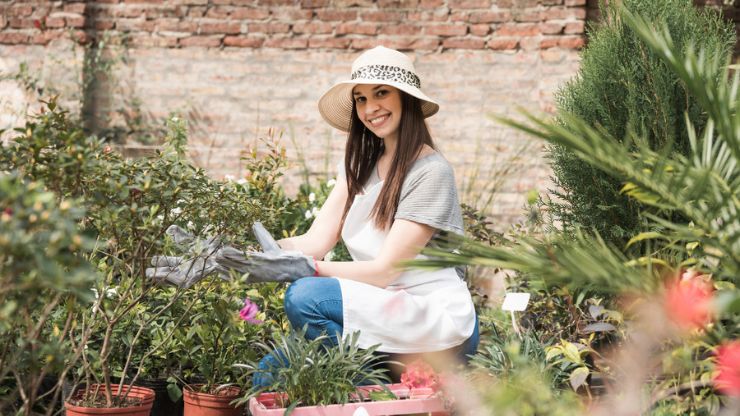As the new year begins, it’s time to kickstart your gardening efforts and prepare for the upcoming growing season. January may seem like a quiet month in the garden, but there are still important tasks to tackle to set the stage for a successful year ahead. In this guide, we’ll explore the eight gardening tasks you should complete in January to ensure your garden thrives throughout the year. From pruning dormant trees and shrubs to planning your vegetable garden and starting seeds indoors, these tasks will help you make the most of the winter months and lay the groundwork for a bountiful harvest come spring and summer. Get ready to roll up your sleeves and get your hands dirty as we dive into the world of January gardening!
Table of Contents
ToggleThe Eight Gardening Tasks You Should Complete in January
1. Prune Deciduous Trees and Shrubs

January is an ideal time to prune deciduous trees and shrubs while they are dormant. Remove any dead, diseased, or damaged branches to promote healthy growth and improve the overall appearance of the plants. Take care to prune properly by making clean cuts just above a bud or lateral branch, and avoid removing more than one-third of the plant’s total growth. Additionally, consider thinning out crowded branches to allow better air circulation and sunlight penetration, which can help prevent disease and encourage vigorous growth come spring.
Also Read: 9 Pretty Purple Flowers To Plant In Your Garden
2. Clean and Sharpen Garden Tools
Take advantage of the quieter winter months to clean and sharpen your garden tools, ensuring they are in top condition for the upcoming gardening season. Remove any dirt, rust, or debris from tools such as pruners, loppers, shovels, and hoes, and disinfect them with a solution of water and bleach to prevent the spread of disease. Use a file or sharpening stone to sharpen the cutting edges of blades, making clean, precise cuts that promote plant health. Properly maintained tools make gardening tasks easier and more efficient, so invest the time now to save yourself hassle later.
3. Plan Your Garden Layout

Use the downtime in January to plan your garden layout for the upcoming growing season. Consider factors such as sunlight exposure, soil quality, and water availability when designing your garden beds. Take note of any areas that need improvement, such as adding compost or adjusting irrigation systems, and make a list of the plants you want to grow. Consider incorporating companion planting strategies to maximize space and promote natural pest control. Planning your garden layout in advance will help you make the most of your garden space and ensure a successful harvest later in the year.
4. Start Seeds Indoors
Get a head start on your spring garden by starting seeds indoors in January. Many vegetables and flowers can be started indoors several weeks before the last frost date, giving them a head start on growth and ensuring a longer growing season. Use seed trays or containers filled with seed starting mix, and place them in a warm, sunny location or under grow lights to encourage germination and healthy growth. Keep the soil evenly moist but not waterlogged, and transplant seedlings into larger pots once they have developed a few sets of true leaves. Starting seeds indoors allows you to grow a wider variety of plants and extend your growing season.
Don't just scroll, subscribe!
BuzzTrail's unique web-stories are the cure for boredom you've been waiting for.
5. Plan for Frost Protection

In many regions, January brings frosty nights that can damage tender plants. Take steps to protect your garden from frost damage by covering vulnerable plants with frost cloth or floating row covers. Mulch around the base of plants to help insulate the soil and protect roots from freezing temperatures. Consider installing frost protection devices such as frost blankets or heat lamps in particularly cold areas of your garden. Planning for frost protection now will help safeguard your plants and ensure they survive until warmer weather arrives.
6. Check Garden Structures and Infrastructure
Inspect your garden structures and infrastructure, such as trellises, fences, and raised beds, for any signs of damage or wear and tear. Repair or replace any broken or rotted parts to ensure they are sturdy and secure. Check irrigation systems for leaks or clogs, and clean or replace filters as needed. Take this opportunity to assess the overall layout and design of your garden and make any necessary improvements or adjustments to enhance functionality and efficiency.
7. Prune Fruit Trees and Grapevines

January is an ideal time to prune fruit trees and grapevines to encourage healthy growth and maximize fruit production. Remove any dead, diseased, or crossing branches, and thin out crowded areas to improve air circulation and sunlight penetration. Pruning fruit trees and grapevines while they are dormant helps stimulate new growth and improves the overall structure of the plants. Take care to follow proper pruning techniques and avoid over-pruning, as this can weaken the plants and reduce fruit production.
Also Read: 7 Best Cool Season Annuals For Winter Gardens
8. Plan for Spring Plantings
Use the winter months to plan for spring plantings and prepare your garden beds accordingly. Consider rotating crops to prevent soil depletion and reduce the risk of pests and diseases. Test your soil pH and nutrient levels and amend as needed to ensure optimal growing conditions for your plants. Make a planting schedule based on your local climate and the specific requirements of each crop, taking into account factors such as planting dates, spacing, and companion planting strategies. Planning ahead will help you stay organized and make the most of the upcoming growing season.
Conclusion
In conclusion, January is a crucial time for gardeners to lay the groundwork for a successful growing season ahead. By completing the eight essential gardening tasks outlined in this guide, you’ll ensure that your garden is well-prepared to thrive throughout the year. From pruning and planning to seed starting and pest management, these tasks will set the stage for healthy plants and abundant harvests. Embrace the opportunities that January presents to nurture your garden and cultivate a space that brings you joy and beauty. With careful attention and dedication to these tasks, you’ll be rewarded with a vibrant and flourishing garden to enjoy in the months to come.
FAQs
What are some essential tasks for January gardening?
What are some essential tasks for January gardening?
Essential tasks for January gardening include pruning dormant trees and shrubs, planning your vegetable garden, starting seeds indoors, cleaning and organizing gardening tools, mulching to protect plants from frost, and inspecting for signs of pests or diseases.
Is it too early to start gardening in January?
Is it too early to start gardening in January?
While January may seem early for gardening in some regions, there are still plenty of tasks you can do to prepare for the upcoming growing season, such as planning, pruning, and starting seeds indoors. It’s never too early to get a head start on your garden!

